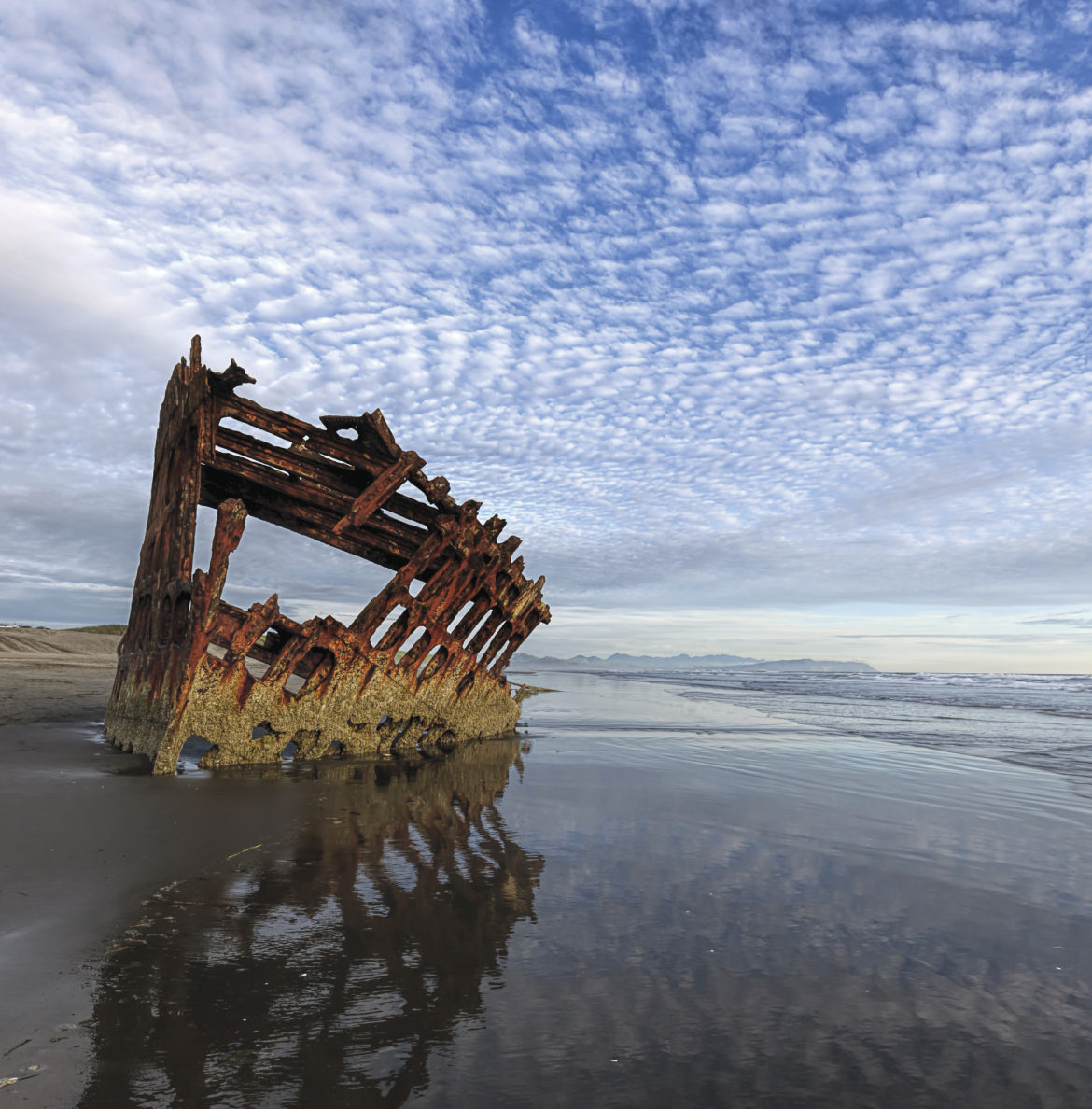Expect wild tales and wildlife at Fort Stevens State Park
written by Joni Kabana
There’s a haunting line in the lyrics of the song “I Was Brought To My Senses” by singer-songwriter Sting that reads: “And out of the confusion, where the river meets the sea, came things I’d never seen, things I’d never seen.”
If you’ve ever ventured to the upper northwest corner of Oregon and witnessed the swells that occur when the mighty Columbia River rushes to meet incoming Pacific Ocean tides, these words would barely scratch the surface of the impression of what you’d see in those treacherous waters.
Dubbed the “Graveyard of the Pacific,” many a sailor has gone down with the ship while trying to cross this navigational nightmare. Since 1792, some 2,000 ships have sunk in these unforgiving swells formed over a long stretch of sandbar, and notoriously dangerous conditions can arise swiftly without warning. Today, expert bar pilots well educated on the unpredictable confluence patterns assist ships coming and going, giving viewers from the safety of Astorian sea decks a delightful daily awe-inspiring maritime show.
The remains of one shipwreck still stand on the shore of Fort Stevens State Park, an old military fort that guarded this Pacific Northwest entry point from the Civil War until World War II. Today, people gather to watch the sunset silhouetting the metal skeleton of the Peter Iredale, a British ship that ran aground in 1906 en route to picking up fine Oregon wheat.
This sweet spot in Oregon is rich in local history and lore. Day trips will certainly prove to be too short to see the many interesting museums, natural landscapes, salty-dog bars and fish stands that Fort Stevens and the surrounding area have to offer. Consider pulling into the 4,300 acre park to camp so that you can hike on the many trails, beach-comb for lost diamonds, view abundant wildlife and ponder the extremities—from weather to wild tales to fishing hyperbole. Reservations are recommended and required for stays in yurts.
Fort Stevens enjoys the reputation of being the only military fort in the United States to be invaded by an enemy during wartime (after the War of 1812) when it was attacked by a Japanese submarine in June 1942. Take an underground tour of a gun battery that served as a World War II command center during summer. For tour information, call the Friends of Old Fort Stevens at 503.861.2000.









